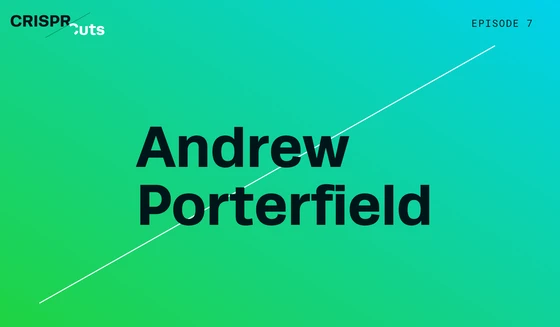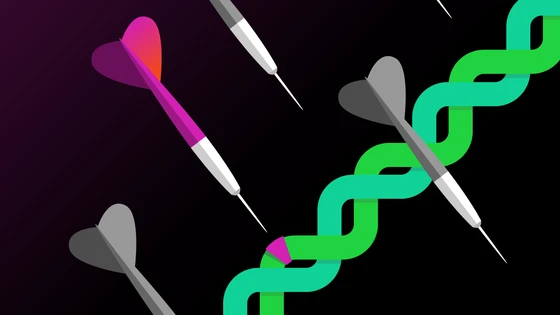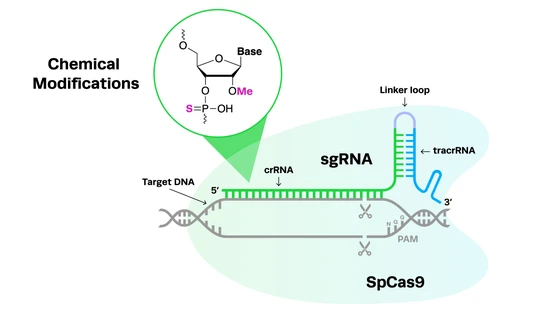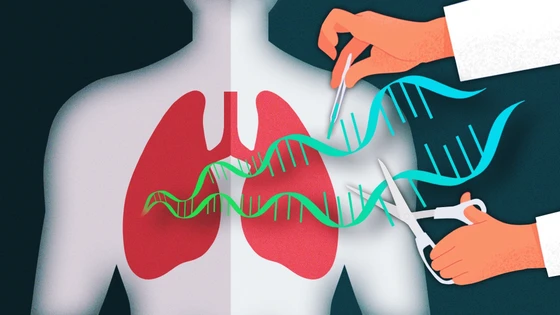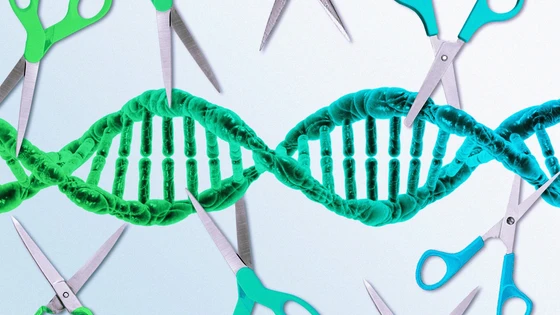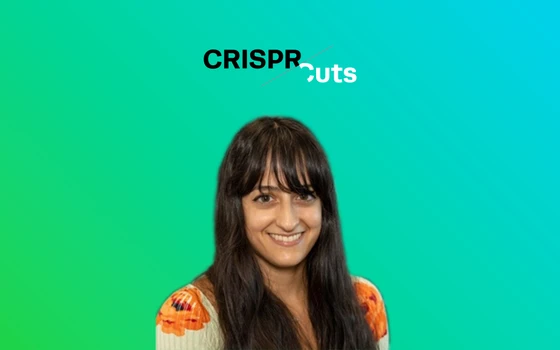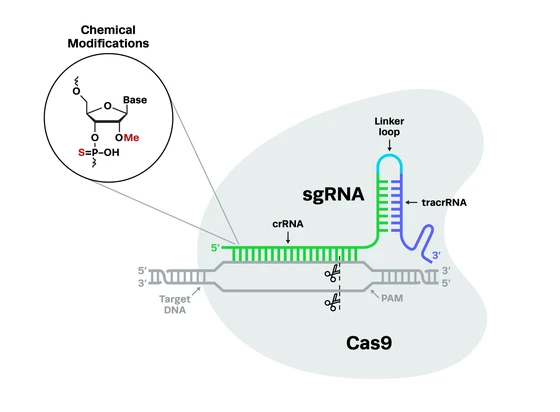CRISPR Cuts is Synthego’s official podcast, where scientists-turned-marketers Kevin Bryant & Minu Prabhune discuss the latest genome engineering news with CRISPR experts to inform and educate both scientists and non-scientists.
In this episode, we chatted with Andrew Porterfield, a science journalist who focuses on the intersection of biotech and agriculture. We caught up with Andrew to discuss how CRISPR is impacting the agriculture industry and how the regulatory decisions related to this technology may shape its use and adoption in different parts of the world.
CRISPR is Changing the Agriculture Industry
Read on or listen to the full podcast on iTunes to learn more about Andrew Porterfield’s views and opinions on how technology like CRISPR is changing our world. Andrew also covers the complex and diverse regulatory landscape surrounding CRISPR and its impact on the future of engineered food and plants.
Kevin Bryant: Welcome Andrew! Please tell us a little bit about your background: who you are, where you're from, and what kind of work you're doing.Andrew Porterfield: I'm originally from New Jersey, just outside of Philadelphia, and I've been living in California for about 28 years. I started out thinking I wanted to be a doctor and then got a bachelor's degree in physical anthropology and natural sciences from the University of Pennsylvania in Philadelphia. I realized that a career in clinical medicine was really not for me, and dabbled a bit in working in a laboratory as a bench scientist, as a lab technician after I got my BA, and kind of realized that wasn't for me either.
So, I went out west and started to combine work in journalism and once some of my editors discovered that I knew what a carbon atom was, they told me, "Well, hey, how would you like to write any health or environmental or science articles that come out?" And I said, "Sure!" and the rest has been history. I've been a journalist, public relations officer for university or non-profit, doing public relations for academic institutions, and have done marketing for everything from startups to huge multinational pharmaceutical corporations.
So, I went out west and started to combine work in journalism and once some of my editors discovered that I knew what a carbon atom was, they told me, "Well, hey, how would you like to write any health or environmental or science articles that come out?" And I said, "Sure!" and the rest has been history. I've been a journalist, public relations officer for university or non-profit, doing public relations for academic institutions, and have done marketing for everything from startups to huge multinational pharmaceutical corporations.
Minu Prabhune: We have been reading some of your articles, especially those on the Genetic Literacy Project, and one interesting topic has definitely been how CRISPR is being used in agriculture or how it is being used to improve our food supply. So, today, we thought we would like to chat more about this topic and find out more about how CRISPR is impacting our future food, right? Let's start with one of the articles which you had written about food wastage and how CRISPR could help in that. Could you talk more to that?
Andrew: Yeah, that was one I wrote back last summer and it started out with the announcement about J.R. Simplot, a firm in Idaho that does work with the genetics of potatoes. It introduced two types of potatoes, one using RNA interference and another one using CRISPR-Cas9 that might be able to extend the shelf life and prevent browning of an average potato.
This addresses a problem with food wastage. If you could find a way to somehow or other control the browning and rotting of potatoes alone you could prevent 4 million pounds of bruised and brown potatoes from being thrown away every year. Food waste is a huge problem. I think the Food and Agriculture Organization estimates that about a third of food produced for humans is either lost or wasted.
CRISPR has been honestly revolutionary. I think that’s because of its simplicity, how easy it is to use, but also of its more “cis-genic” personality if you will. If you're not taking in a foreign strip of DNA from another species, but instead, you're creating something as small as an SNP or deleting an entire gene or ideally inserting another gene or another variant of a gene from the same species. The hope is that this eliminates some of the societal and regulatory objections that people have had with transgenics, typically what people think of when they hear the word GMO.
CRISPR eliminates some of the problems that come up with transgenics because it is more precise than previous methods. This reduces the possibility of off-target effects of inadvertent genetic tweaks somewhere else in the genome.
Minu: Introducing qualities like this non-browning, or even disease resistance, can actually save plants and help reduce wastage food or even actually save them in the long term. One interesting example was of researchers working on cacao plants to save chocolate in the future because these crops are falling to pests and they might face drought in the future. Another area where CRISPR or genetic engineering is being used is to enhance food to make it look better, more nutritive and those type of qualities which are actually just making it even better for, better as a product.
Andrew: Yeah, the chocolate one is kind of fun. Basically, anything where you have a gene that's involved in vitamin production, or can enhance say the fiber content, you can edit that gene or the regulatory sequence to enhance certain functions.
What a lot of people don't realize is that a lot of vitamins in foods have been improved through genetic engineering. Vitamin C now is largely produced by inserting the genes that express the proteins for vitamin C into a cornstalk through typical transgenics. I don't know where you could find a better plant to produce vitamin C that would be natural.
Kevin: We've mostly talked about how to save good food from going bad and how to make good food better. Another aspect of CRISPR and AgBio that's really interesting is how to allow farmers to grow food in places where they otherwise would not be able to. The whole world's facing climate change, the weather's just unpredictable, there's drought, there are heat waves. How is CRISPR impacting that part of farming, making crops more compatible with different climates?Andrew: It goes back to if you can find a gene or genetic variant that would help a plant adapt to drought conditions, other chemical issues, higher solidity rates, a number of those things, then CRISPR techniques can help.
One of the more interesting ones that is somewhat related to that was covered in a story I just wrote on wildfires. There's a woman in Montana who has been looking at some of the genes that are involved in pine bark, pine trees, especially western lodgepole and Ponderosa pine trees and how they react to the pine bark beetle.
There's a genetic circle with where the pine bark beetle kind of creates its own microenvironment in the bark tree and that eventually kills it, making these tree more susceptible to wildfire. There are differences between trees that can resist a pine bark beetle a little bit more than others. Those differences appear to be genetic.
There, you might be able to use CRISPR to edit the trees to keep the pine bark beetle from coming in and killing some of these trees, which may make them more resistant to wildfires. This could also be achieved through traditional breathing techniques, but with trees, their reproductive cycle is pretty long. So this is an interesting application of CRISPR.
Andrew: It goes back to if you can find a gene or genetic variant that would help a plant adapt to drought conditions, other chemical issues, higher solidity rates, a number of those things, then CRISPR techniques can help.
One of the more interesting ones that is somewhat related to that was covered in a story I just wrote on wildfires. There's a woman in Montana who has been looking at some of the genes that are involved in pine bark, pine trees, especially western lodgepole and Ponderosa pine trees and how they react to the pine bark beetle.
There's a genetic circle with where the pine bark beetle kind of creates its own microenvironment in the bark tree and that eventually kills it, making these tree more susceptible to wildfire. There are differences between trees that can resist a pine bark beetle a little bit more than others. Those differences appear to be genetic.
There, you might be able to use CRISPR to edit the trees to keep the pine bark beetle from coming in and killing some of these trees, which may make them more resistant to wildfires. This could also be achieved through traditional breathing techniques, but with trees, their reproductive cycle is pretty long. So this is an interesting application of CRISPR.
Minu: We know that CRISPR is being used for various applications for making food better, and just in general improving conditions for us. But what does the regulatory landscape look like? Is it simple to just have this food out in the market or is there a major barrier there to convince governments to actually let engineered food pass through? Andrew: The regulatory front is really kind of split right now. In the United States alone, there are two agencies responsible for regulating food and their supply, U.S. Department of Agriculture and U.S. Food and Drug Administration. The USDA, so far, has said that it's not going to regulate any gene-edited products. Now, both of these agencies do regulate transgenics to some degree. They do it in slightly different ways, but they do.
The FDA, however, is saying that they do plan on regulating gene editing, but it's not clear how that's going to work. So they've promised more innovative and nimble rules for CRISPR and these types of technologies, but we haven't seen anything yet.
Whereas the USDA says, "No, we consider this unregulated. It's not a pest that's being introduced or the source of the pest that's being introduced into a new product. So, we're not going to pay attention to it.”
Move over to Europe, and Europe at very first, was silent on CRISPR, but then last July, the court of justice of the EU, the European Union, ruled that gene editing was exactly the same as existing transgenics and GMO, and which essentially stops the use of CRISPR on anything from member nations of the European Union.
Now that's the court of justice, the European Parliament could change its mind later, other host countries can also do their own thing. Europe has always provided the most resistance to these kinds of genetic changes.
Japan has said that It would not apply genetic technology regulations to CRISPR and to gene editing. Canada and Australia are saying that they are not going to regulate it, but New Zealand is saying that it's going to. Russia has banned all types of genetic modification, with the sole exception being for research use within the Russian Republic.
So, it's really a mixed bag out there right now. But it doesn't look like there's uniform opposition as what was generated by GMOs.
Andrew: The regulatory front is really kind of split right now. In the United States alone, there are two agencies responsible for regulating food and their supply, U.S. Department of Agriculture and U.S. Food and Drug Administration. The USDA, so far, has said that it's not going to regulate any gene-edited products. Now, both of these agencies do regulate transgenics to some degree. They do it in slightly different ways, but they do.
The FDA, however, is saying that they do plan on regulating gene editing, but it's not clear how that's going to work. So they've promised more innovative and nimble rules for CRISPR and these types of technologies, but we haven't seen anything yet.
Whereas the USDA says, "No, we consider this unregulated. It's not a pest that's being introduced or the source of the pest that's being introduced into a new product. So, we're not going to pay attention to it.”
Move over to Europe, and Europe at very first, was silent on CRISPR, but then last July, the court of justice of the EU, the European Union, ruled that gene editing was exactly the same as existing transgenics and GMO, and which essentially stops the use of CRISPR on anything from member nations of the European Union.
Now that's the court of justice, the European Parliament could change its mind later, other host countries can also do their own thing. Europe has always provided the most resistance to these kinds of genetic changes.
Japan has said that It would not apply genetic technology regulations to CRISPR and to gene editing. Canada and Australia are saying that they are not going to regulate it, but New Zealand is saying that it's going to. Russia has banned all types of genetic modification, with the sole exception being for research use within the Russian Republic.
So, it's really a mixed bag out there right now. But it doesn't look like there's uniform opposition as what was generated by GMOs.
Kevin: What is the general public's perception of edited food? For whatever reason, a lot of people don't trust it or don't want “GMO.” Are you seeing the same kinds of things with CRISPR, is the public kind of open to the idea of having their food be edited?Andrew: Most of the members of the public don’t know a lot about using CRISPR for editing plants. People don't think much about plant breeding. It's a still relatively small, but wealthy and vocal, part of the population that have heard of all this.
Public perception, I kind of read, as still kind of out there. A lot of it depends on who is out there willing to sway public opinion. There are people who have been activists in working for the organic food industry, for natural products manufacturers. These are people representing an 80 billion dollar a year business. They have been instrumental in orchestrating a lot of the original resistance to genetic modification. You're starting to see some of that being mobilized against CRISPR, but not with the same consistency that you saw with transgenics. I think a lot of people are looking at it and realizing they're not quite the same thing, and some of the issues with not introducing a foreign sequence of DNA into another organism kind of negates a lot of the original arguments against them.
I think, now, you could probably say that from the public's point of view, it's still kind of a clean slate, and I think scientists and farms, agribusiness, even the pharmaceutical industry could kind of benefit from gearing up and directing, involving the public in some more of these discussions about whether there's a moral, religious, or ethical problem with introducing this.
Andrew: Most of the members of the public don’t know a lot about using CRISPR for editing plants. People don't think much about plant breeding. It's a still relatively small, but wealthy and vocal, part of the population that have heard of all this.
Public perception, I kind of read, as still kind of out there. A lot of it depends on who is out there willing to sway public opinion. There are people who have been activists in working for the organic food industry, for natural products manufacturers. These are people representing an 80 billion dollar a year business. They have been instrumental in orchestrating a lot of the original resistance to genetic modification. You're starting to see some of that being mobilized against CRISPR, but not with the same consistency that you saw with transgenics. I think a lot of people are looking at it and realizing they're not quite the same thing, and some of the issues with not introducing a foreign sequence of DNA into another organism kind of negates a lot of the original arguments against them.
I think, now, you could probably say that from the public's point of view, it's still kind of a clean slate, and I think scientists and farms, agribusiness, even the pharmaceutical industry could kind of benefit from gearing up and directing, involving the public in some more of these discussions about whether there's a moral, religious, or ethical problem with introducing this.
Minu: I think it's very interesting in general, what you said about including the public. An interesting study on this point was by a researcher in Vermont who just was investigating whether actually labeling the food changes public perception or not. They actually found that if they do put descriptive labels, even with GMOs, on the food products, people are actually open to it. So, maybe the whole thing is more about just including the public and making sure to clarify what exactly has been done to the product, whether it's CRISPR or any kind of genetic engineering.
Andrew: I think that definitely all plays in. How many people actually read labels, you have to kind of wonder. With the FDA and USDA trying to figure out a new label for all genetic modifications, one of the first things that a number of organic activists wanted to have was a skull and crossbones on the thing. They got upset because the FDA and others said, "No we're absolutely not doing that."
So there are people, some of the more politically active players in this area, that know the power of symbolism and they know that people aren't really reading labels, but they know if you put a skull and crossbones on something, they're just going to shy away from it.
Minu: What other applications of CRISPR that come to mind which will be most impactful?Andrew: I think one of the most interesting areas, one that might even create some more ethical arguments down the road is the concept of creating a gene drive, where you CRISPR to edit the germ life. So you can essentially upend classical and Mendelian genetics and just say, "Well we're now going to take whatever favorite allele of whatever favorite gene and pass it down through several generations at once and either enhance an organism or perhaps, like in the cases where it's being used now with mosquitoes, eliminate an entire species.
That creates a whole lot of new questions that really deserve a lot of public input and a lot of public discussions before they're widely adopted.
Andrew: I think one of the most interesting areas, one that might even create some more ethical arguments down the road is the concept of creating a gene drive, where you CRISPR to edit the germ life. So you can essentially upend classical and Mendelian genetics and just say, "Well we're now going to take whatever favorite allele of whatever favorite gene and pass it down through several generations at once and either enhance an organism or perhaps, like in the cases where it's being used now with mosquitoes, eliminate an entire species.
That creates a whole lot of new questions that really deserve a lot of public input and a lot of public discussions before they're widely adopted.
Kevin: Using CRISPR for these homing gene drives is probably one of the most interesting CRISPR applications to me. It can literally, in a short amount of time, eradicate really devastating disease like malaria. That would be extremely impactful. We don't see malaria every day here in this county, but worldwide, it's a huge problem.Andrew: Yeah and we could see malaria in this country. We're already seeing a few isolated cases that come in and warmer areas from the southern border and, thanks to global travel, there's no reason why something couldn't come in. Kevin Esvelt, a researcher at MIT is kind of a one-man researcher and ethicist. He'll do the research and talk about, "Hey I think this is really promising, but at the same time, hey, we need to take a stop, we need to take a breather and look at this and see what kind of ethical issues and public issues are being involved there."
Andrew: Yeah and we could see malaria in this country. We're already seeing a few isolated cases that come in and warmer areas from the southern border and, thanks to global travel, there's no reason why something couldn't come in. Kevin Esvelt, a researcher at MIT is kind of a one-man researcher and ethicist. He'll do the research and talk about, "Hey I think this is really promising, but at the same time, hey, we need to take a stop, we need to take a breather and look at this and see what kind of ethical issues and public issues are being involved there."
Kevin: We really like Esvelt’s approach to science, that since the environment is shared amongst all of us, then everyone should have a say in what scientists do to it. That approach, with transparency and being open with the community, talking about what the science he and his group are working on, making sure everyone in the community is clear on it, is a great model that I hope that more people can follow in the future. Genome engineering and CRISPR are starting to become parts of our everyday lives. They are becoming part of the foods we eat and I think it will be impactful in more areas in the very near future. I'd be interested to hear what's one of the most unusual or sort of unexpected applications of CRISPR?Andrew: I think some of the most unusual ones involve people who think they can revive extinct species. I'm looking at one where somebody was talking about the passenger pigeon. There used to be billions of them in the east coasts and central part of the United States. I think the last one died in 1914 or just around World War I.
So now there's an idea going about that might be able to use CRISPR to re-introduce the species, by engineering and crossbreeding with living pigeons that are genetically close to the passenger pigeon.
Same idea with the woolly mammoth or the saber-toothed tiger. People are working on the research of it, trying to see, "Hey could this actually work?"
I think some of the most promising areas are the health and pharmaceutical applications. There are maybe ways you can tell whether certain breast cancer mutations might be harmless or can create other kinds of problems because once you can really precisely know and understand gene expression and how that leads to tumor formation, you might be able to tweak a number of steps along that process. I think that has some dramatic potential and in some ways more public acceptance as well.
Andrew: I think some of the most unusual ones involve people who think they can revive extinct species. I'm looking at one where somebody was talking about the passenger pigeon. There used to be billions of them in the east coasts and central part of the United States. I think the last one died in 1914 or just around World War I.
So now there's an idea going about that might be able to use CRISPR to re-introduce the species, by engineering and crossbreeding with living pigeons that are genetically close to the passenger pigeon.
Same idea with the woolly mammoth or the saber-toothed tiger. People are working on the research of it, trying to see, "Hey could this actually work?"
I think some of the most promising areas are the health and pharmaceutical applications. There are maybe ways you can tell whether certain breast cancer mutations might be harmless or can create other kinds of problems because once you can really precisely know and understand gene expression and how that leads to tumor formation, you might be able to tweak a number of steps along that process. I think that has some dramatic potential and in some ways more public acceptance as well.
Kevin: Yeah, CRISPR basically has the potential to redefine what medicine; we can move from treating symptoms to actually curing a disease and maybe even sort of like eradicating things like cancer, or at least moving in that direction.Andrew: Absolutely, and if you can really target precise areas of the genome that are pathogenic or at least helping to introduce pathogenesis from another source, that can create some really dramatic differences. Like you said, you can actually cure a disease and eliminate it, and also reduce some of the adverse side effects that we see with even traditional drugs today.
Want more great CRISPR content? Check out our podcast CRISPR Cuts to keep learning about genome engineering and stay up-to-date with the latest developments.
If you prefer other ways to get your CRISPR news, head over to our comprehensive list of all the best CRISPR news sources to find the best option for your favorite way to learn.
Andrew: Absolutely, and if you can really target precise areas of the genome that are pathogenic or at least helping to introduce pathogenesis from another source, that can create some really dramatic differences. Like you said, you can actually cure a disease and eliminate it, and also reduce some of the adverse side effects that we see with even traditional drugs today.
Want more great CRISPR content? Check out our podcast CRISPR Cuts to keep learning about genome engineering and stay up-to-date with the latest developments.
If you prefer other ways to get your CRISPR news, head over to our comprehensive list of all the best CRISPR news sources to find the best option for your favorite way to learn.
